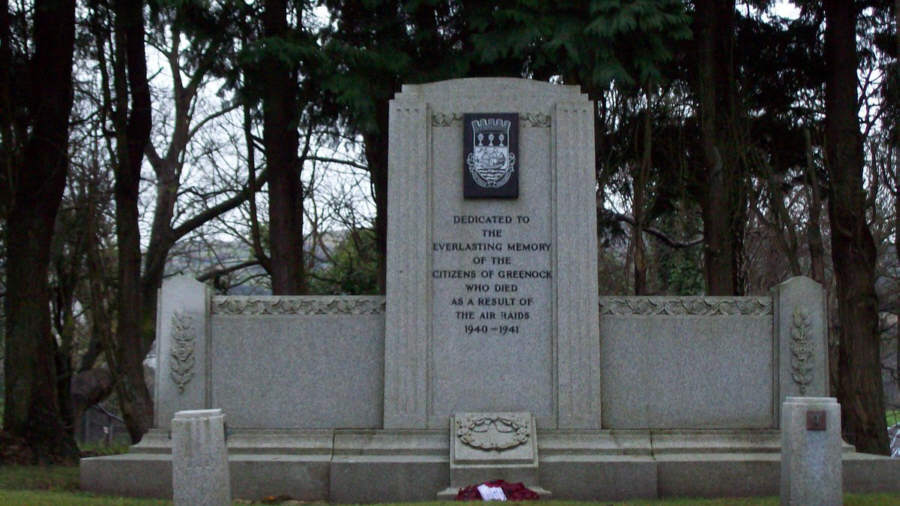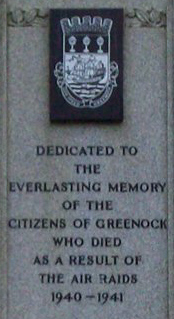The Greenock Blitz
The Greenock Blitz is the name given to two nights of intensive bombing of the town of Greenock, Scotland during the Second World War when the Nazi German Luftwaffe attacked in May 1941.
The raids targeted the many ships and shipyards around the town but like the Clydebank Blitz the previous March the brunt of the bombing was taken by civilians. Over the two nights 280 people were killed and over 1,200 injured. From a total of 18,000 homes nearly 10,000 suffered damage and 1,000 were destroyed outright.
An Air Ministry 'decoy' behind Loch Thom prevented the number of casualties being even higher. The decoy was lit on the second night of the blitz. It consisted of a large number of mounds of combustible materials scattered over a wide area of the moorland to simulate a burning urban area. Scores of large bomb craters were found after an inspection of the decoy after the air raids.
The Blitz began around midnight on 6 May when around fifty bombers attacked the town in an apparently random fashion. Bombs fell all over the town and surrounding area: serious damage being inflicted on East Crawford Street and Belville Street. Many civilians fled to the tunnels in the east end of the town, significantly reducing casualties the next night.
Air raid sirens at 12:15am on 7 May marked the beginning of a second night of bombing. Initially, incendiary bombs were dropped around the perimeter of the town. The second wave attacked primarily the east end and centre of Greenock; the distillery in Ingleston Street had been set alight in the first wave, providing a huge fire which acted as a beacon for the rest of the bomber force. The final wave came around 2am; dropping high explosive bombs and parachute land mines which caused widespread destruction.
At 3:30am the "All Clear" sounded; the whole of the town appeared to be in flames. The sugar refineries, distillery and foundries were all extensively damaged, and several churches were left as burnt out shells. However damage to the shipyards was minimal.
The George Medal was awarded to three local firemen: Firemaster Pratten, Sub-Station Officer William Neill and Fireman James Berry who entered a burning building and at great personal risk managed to control a blaze which threatened to destroy a quantity of material essential to the war effort.
Text is available under the Creative Commons Attribution-ShareAlike License and was published on Wikipedia. |







